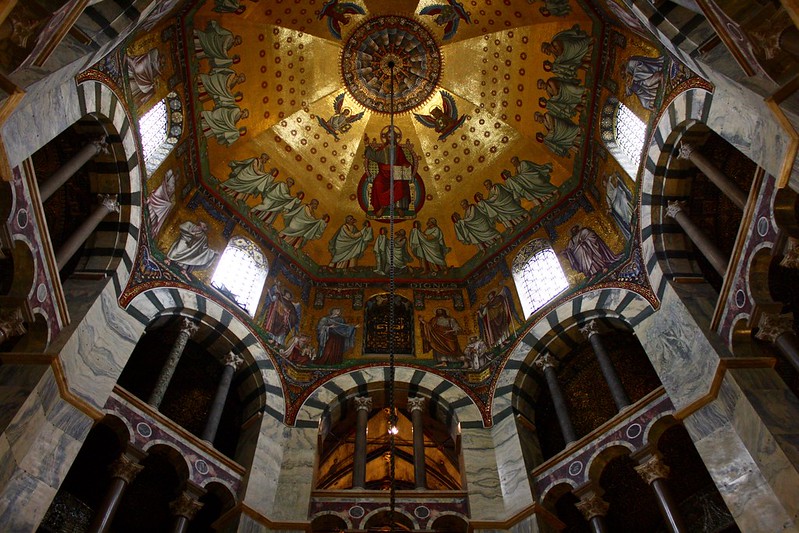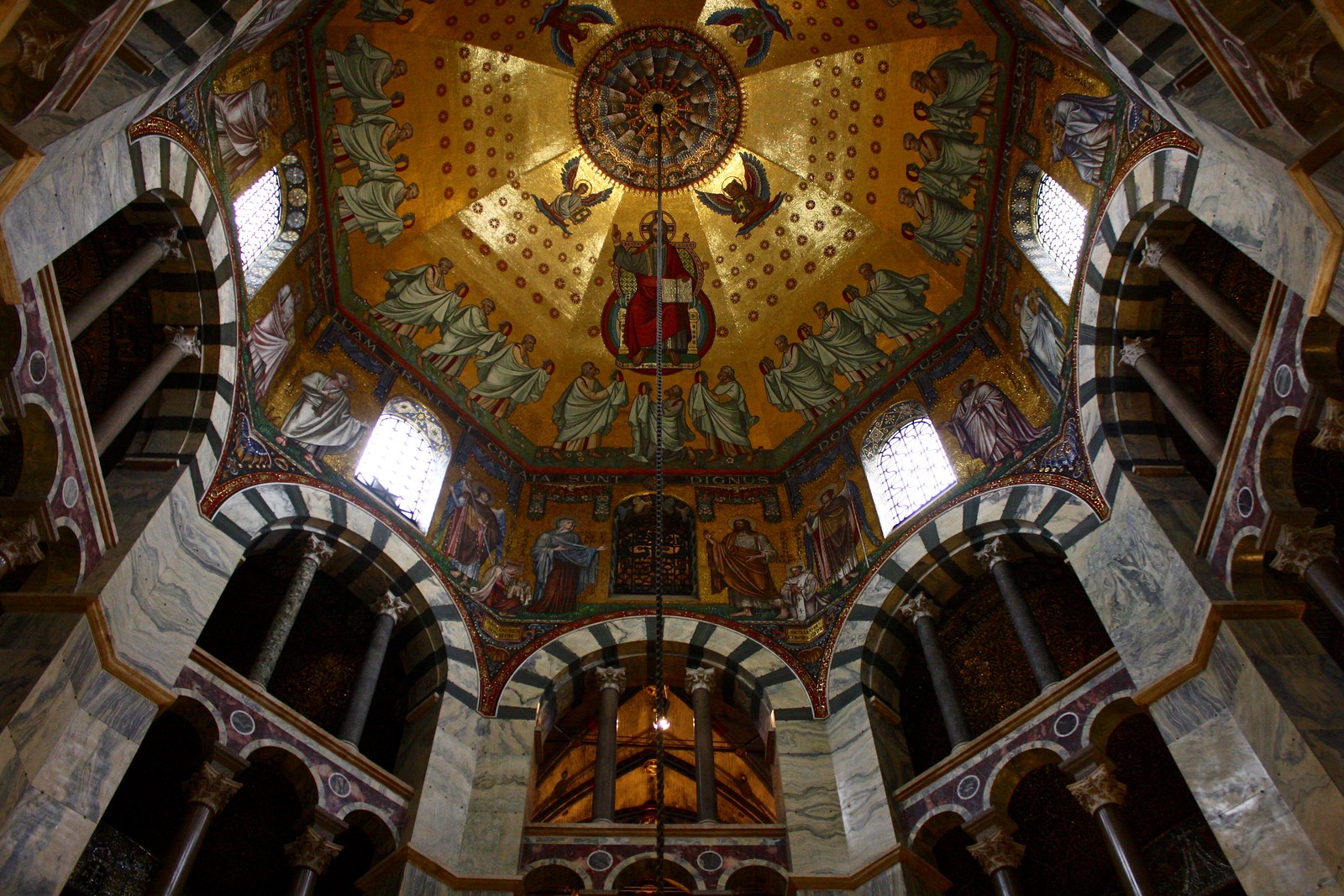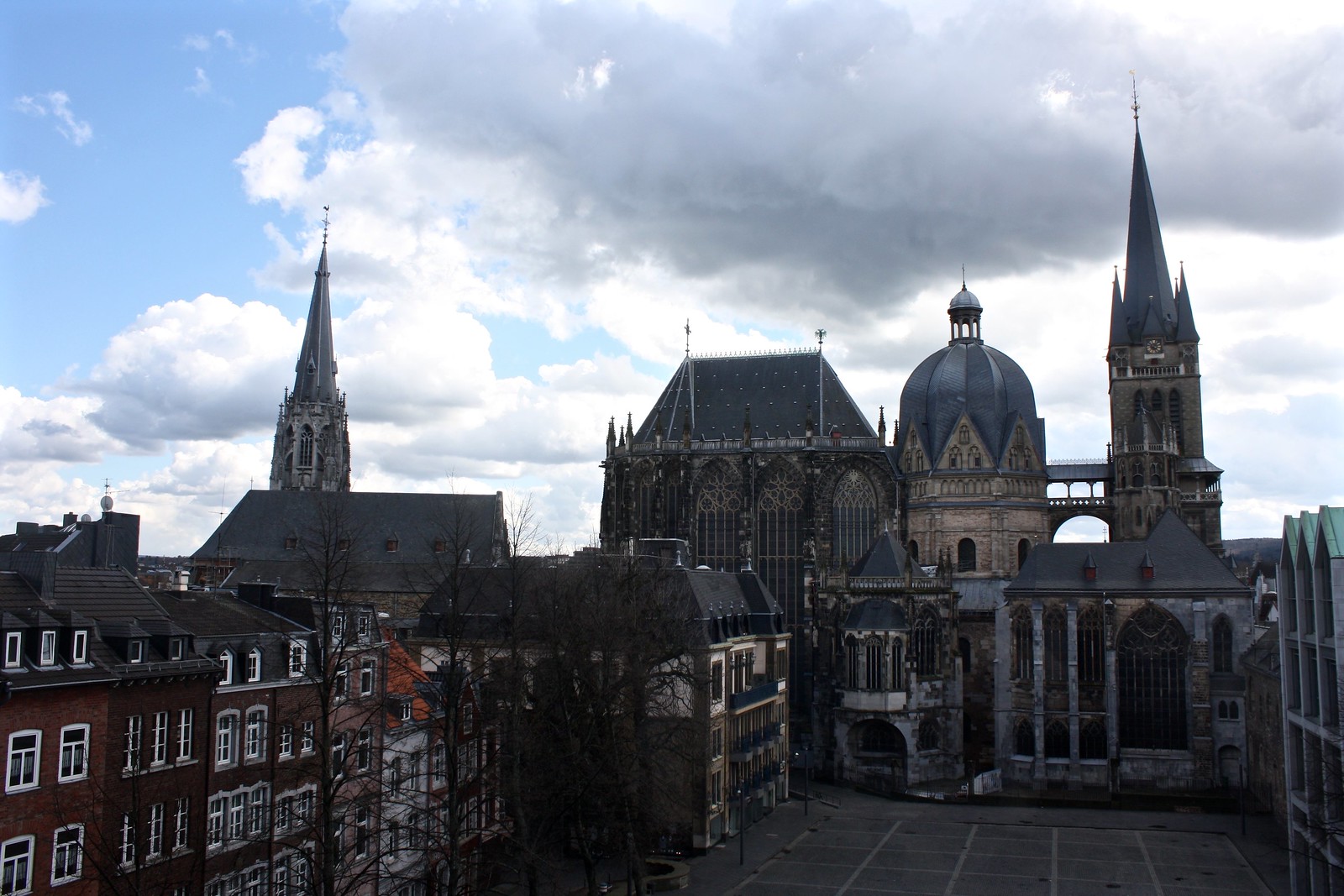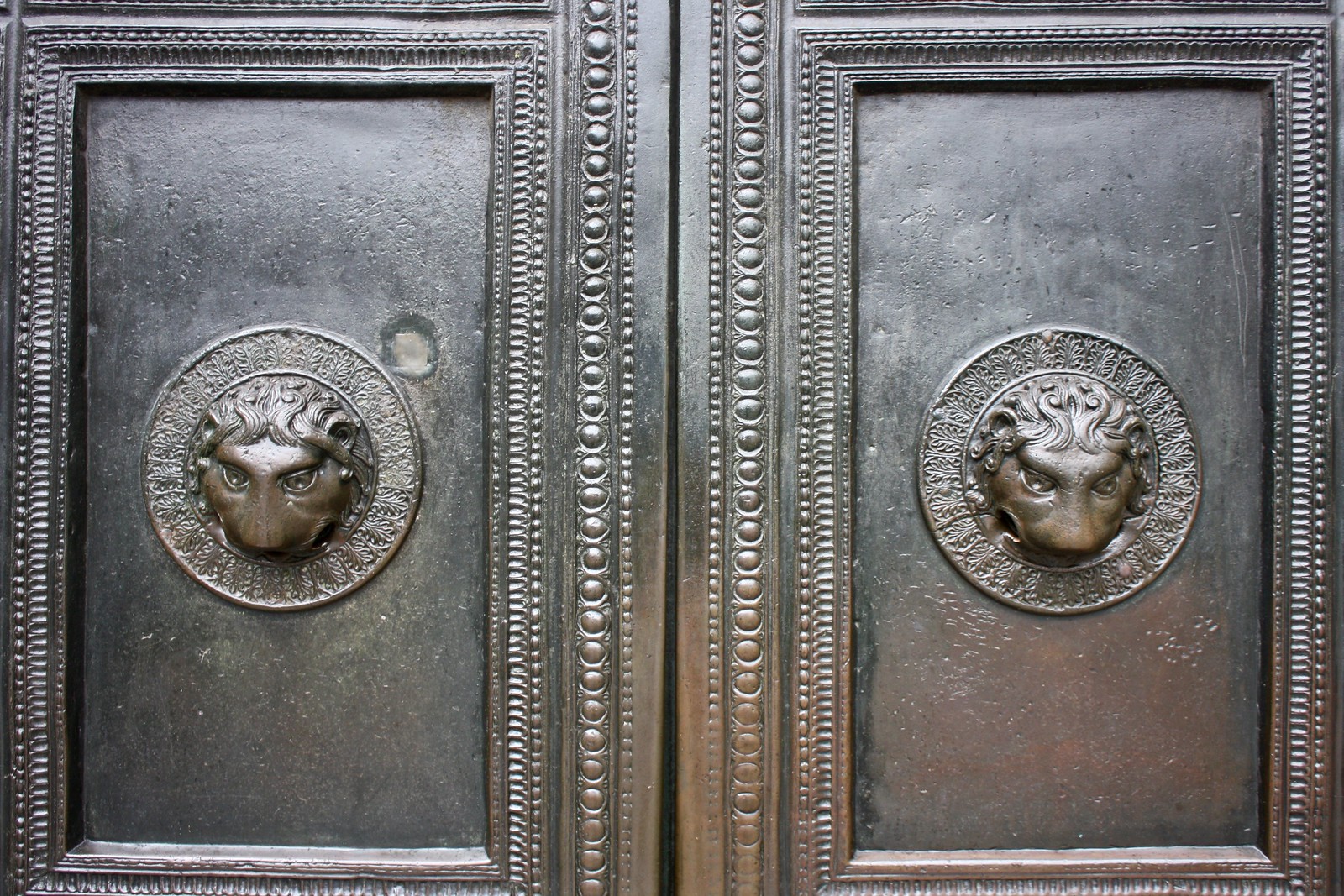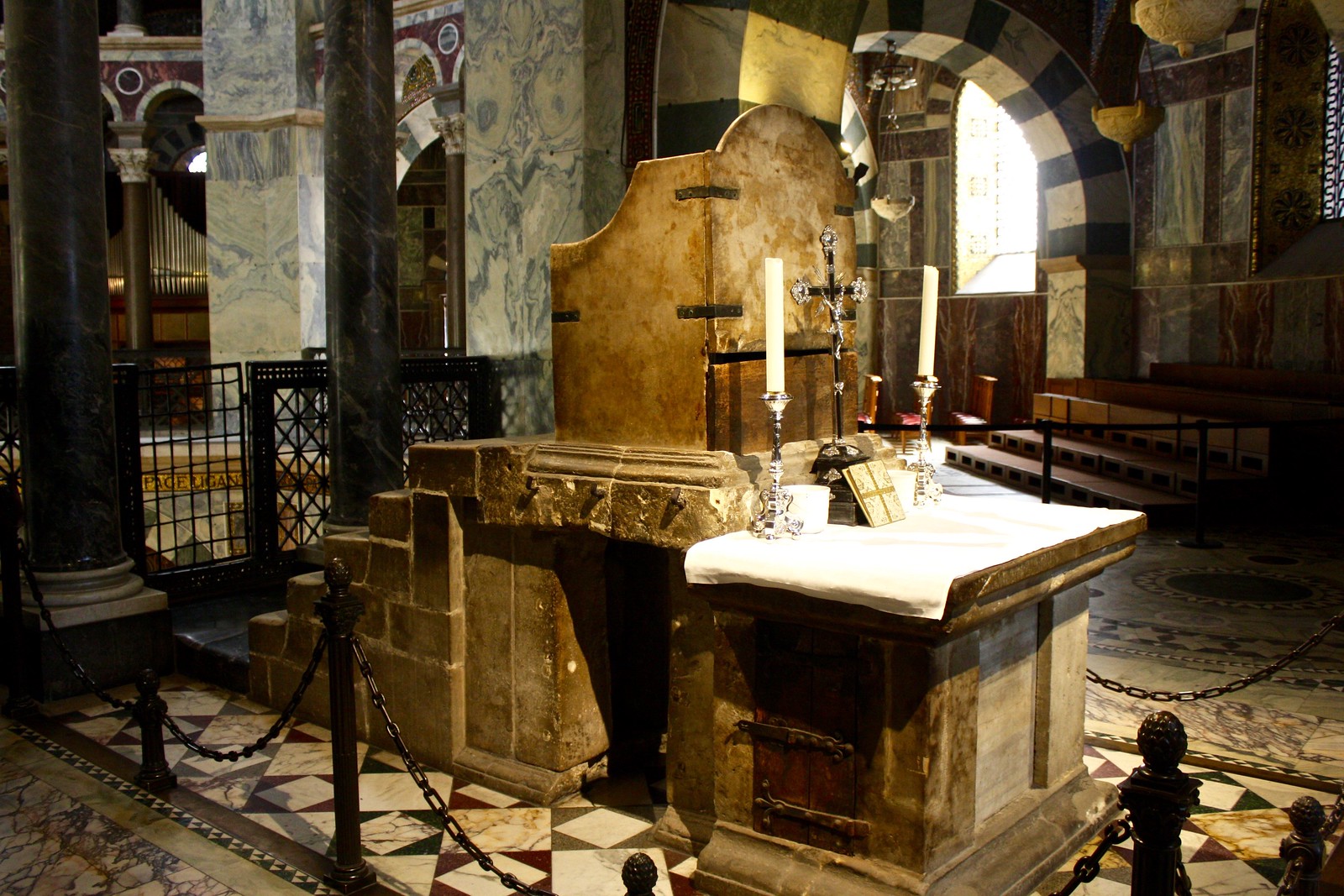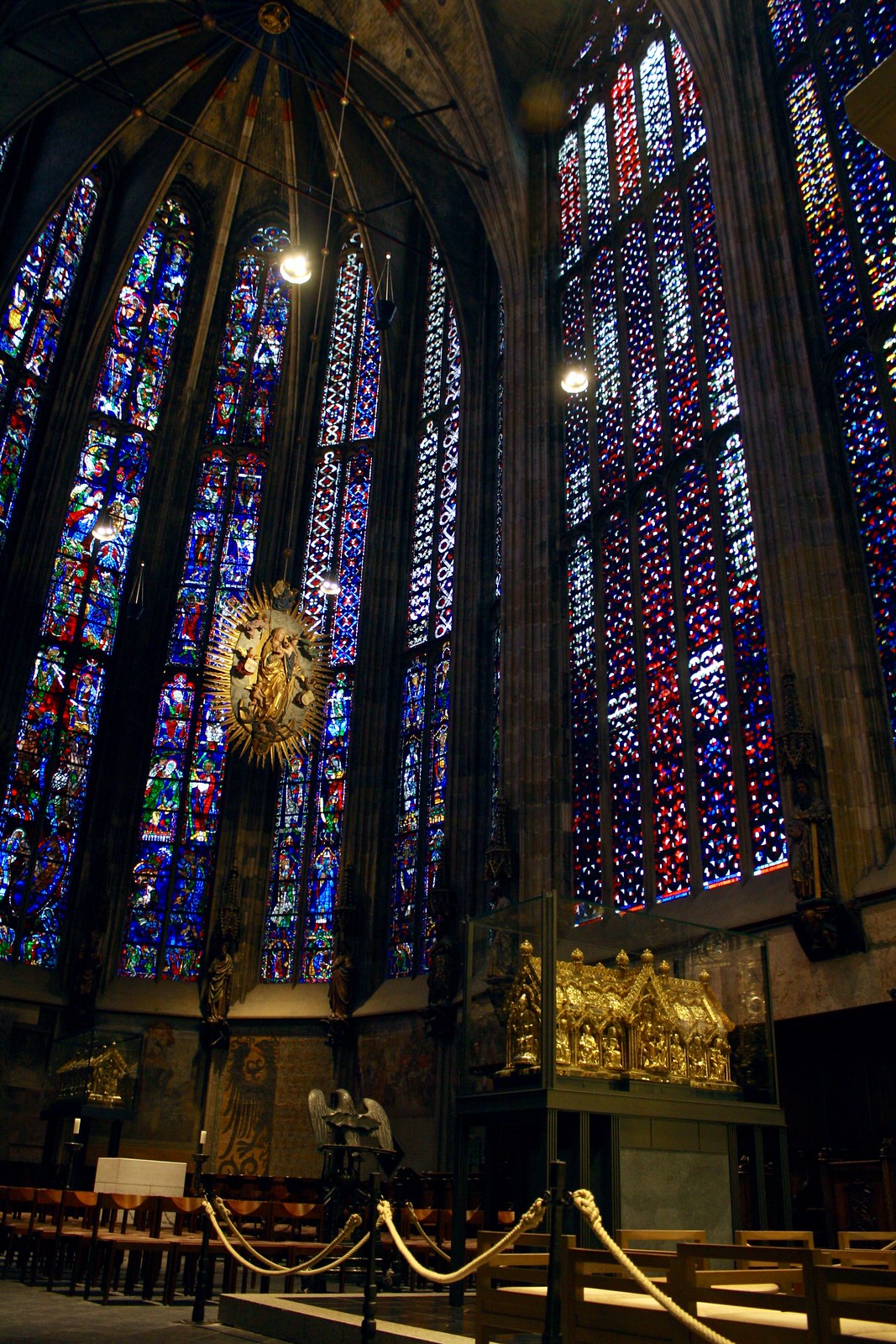As a history major, I’m not one to subscribe to the
Great Man theory of history. The way I see it, inventions, movements, religions, diseases, trade, and geography play a much more crucial role in human events than mere single characters do.
And besides, there have been many Great Women! Nevertheless, some people are more influential than others: think Muhammad, Christopher Columbus, or whoever invented air conditioning.
When it comes to European history specifically,
Charlemagne stands as one of the most significant actors in shaping what we know today as Europe. Following the countless barbarian invasions that had left the western Roman Empire in disarray, Charlemagne (who was himself a “barbarian” Frank) brought the West back together under a single rule, promoted learning amid the ignorance of the Dark Ages, and conquered so much land that he became the father of both France and Germany.
During my weekend jaunt to western Germany last year, I made a daytrip from my home base in
Cologne out west to
Aachen, once the capital of Charlemagne’s short-lived empire and the final resting place of “Charles the Great” himself. Pronounced “AH-khun” [ˈaːxən], the city has been a spa/resort town since Roman times (thanks to its hot springs) and today borders Belgium and the Netherlands.
So who was Charlemagne? (and why care about a warlord from the Dark Ages?)
(Major #NerdAlert here: If you tend to get that glazed-over look whenever you start reading about history, you can skip down to the next section to get to the good stuff about Aachen, but I’ve tried to make this bio of Charlemagne as brief and as easy-to-read as possible!)
As
King of the Franks from 768 to 814 CE, Charlemagne reigned over what now makes up modern France, Germany, the Low Countries, Switzerland, Austria, northern Italy, and northeastern Spain—a vast empire stitched together by endless military campaigns, forced baptisms, and blessings from the Pope. It was the first time these lands had been united politically since the Roman Empire.
His realm was ultimately carved up among his three grandsons:
West Francia became the nucleus of modern France, and
East Francia corresponds roughly with the Germany of today, but
Middle Francia—an unwieldy strip running from the mouths of the Rhine River down into Tuscany—collapsed into smaller kingdoms or was absorbed by its neighbors.
Charlemagne at one point established the
Marca Hispanica—
the Spanish March—as a foray into Moorish Spain. Situated in the far northeastern corner of the peninsula, this defensive frontier primarily served as a buffer between his empire and the lands of al-Andalus to the south, but it also carried the language and culture of a nascent Christian Europe over the Pyrenees Mountains.
Even today,
the Catalan language spoken in this part of Spain is more closely-related to French than it is to Spanish. As Charlemagne’s empire was collapsing, various dukes and lords in the Spanish March broke off and laid the foundations for what would become the Spanish region of
Catalunya.
The first sputterings of the Renaissance came about during Charlemagne’s reign. Called the
Carolingian Renaissance, this brief revival foreshadowed the
12th-Century Renaissance as well as the Italian Renaissance that we all know and love. Charlemagne promoted learning in his court and brought in the English scholar Alcuin of York, who prepared an accurate edition of the Bible, helped to standardize liturgy and sermons, and made sure all monasteries sponsored schools.
We also get our
lowercase letters from the Carolingian script invented during this time period. This mini-renaissance essentially preserved literacy and prevented ignorance, but nothing much original came from it.
When I studied history in college, I took a course on
Alternative History. Now, before you get all up in arms, we did study actual history in this class—you have to know the significance of what actually happened to know what
would have happened had something gone the other way.
For my term project for this class, I studied the life of Charlemagne and how medieval Europe would have turned out had he died early on in his reign. In my own alt-history, I concluded that much of western and central Europe would have fragmented into smaller, warring lordships; the Caliphate of Córdoba would have crept along the Mediterranean coast into
southern France; and Lord only knows if the Renaissance would ever have emerged in Italy—but perhaps it might have in Muslim Spain.
Studying Charlemagne in depth for this course inspired me to one day go on
a history nerd pilgrimage to Aachen, where he ruled his numerous domains and where he was buried. I was considering daytripping north to Düsseldorf, Cologne’s rival, or even Beethoven’s hometown of Bonn, to the south, but Aachen ultimately won out.
Highlights of Aachen
As far as sightseeing goes in this charming German border town, there’s not much apart from the Charlemagne connection. What little is left of his palatial complex forms the core of the city’s
cathedral, Aachener Dom. Charlemagne’s residence has long been lost to the Middle Ages, but the original octagonal cathedral he established here remains.
When you first enter, you’re left simply awe-struck by the sumptuous marble walls, intricate floor tiling, and the golden mosaics that cover the vaulted ceiling. All of these decorations are, sadly, mere Romantic-era reproductions that try to re-create the atmosphere of the original Byzantine-style church that had been lost to the trends of the Baroque—but they do succeed in transporting you back to the 800s, when Charlemagne was trying to construct a “New
Rome” far to the north.
But not everything in the cathedral is a replica. For starters, the
bronze west doors date back to Carolingian times, and you can even touch the same sculpted lion’s head door handles that Charlemagne would have.
If you sign up for a guided tour, you’ll get to go up to the second floor, where you can appreciate some polished stone columns that are purely decorative…but actually
Roman originals carried off from the Eternal City up to Aachen. Nearby sits
Charlemagne’s throne, an austere chair that places more importance on being made from stone taken from the Holy Sepulcher in Jerusalem than on comfort. All German kings in the medieval times were crowned on this throne.
Looking down onto the octagonal nave from above, you’ll lean up against
bronze railings with geometric designs that were originally forged at the time of the cathedral’s construction. It’s truly amazing how much from the early Middle Ages has been preserved here, from a time period we know little about and in a region of Europe continually battered by wars over the centuries.
Adding to the cathedral’s medieval mystique is the
Barbarossa chandelier, a 48-candle behemoth whose lanterns and metal structure represent the walls of the New Jerusalem. Hanging perilously from the ceiling, it reminded me a lot of the eerie ambience I experienced in the
pre-Romanesque churches of Asturias in far northern Spain the year before.
While the eight-sided main nave is unique and interesting, the tall
Gothic choir that buds off behind the altar makes the church feel more like a proper cathedral. Wall-to-wall stained glass recalls the light-filled sanctuary that is the
Sainte-Chapelle in Paris, and a half-dozen gold and shiny artifacts add to the space. Charlemagne’s remains lie here, enclosed in a gaudy, gilded miniature church called the
Karlsschrein.
Speaking of gold and silver, the treasury across the street holds the usual churchy things like bishops’ robes, communion chalices, and tapestries, but of most interest to me was getting to see the
Bust of Charlemagne, an insanely-huge golden reliquary that basically any book or article about the medieval king has a picture of.
Almost getting stranded in Aachen
After checking out Charlemagne’s final resting place, I headed back to the train station to catch my train back to
Cologne. However, I learned it was likely Aachen would be my (temporary) resting place for the night, too. Because of the severe storms that had blown through earlier in the morning, fallen trees were blocking all Deutsche Bahn trains in or out of town: the screen showing upcoming departures indicated
all trains had been cancelled after 11am. With no international cell service or even free wifi in the station, I began to panic.
Thankfully I overheard a Spanish family frantically discussing their own contingency plans, so I struck up a conversation with them asking what they had figured out—after all, there was nobody at the station who really spoke English and it’s not like I speak German or anything. They told me they were going to get their train tickets refunded and catch
the Thalys train that goes between Paris and Cologne via Belgium. The only reason the Thalys still had the green light was because it runs on privately-owned tracks that hadn’t been affected by the fallen trees. I nodded at their complaints that Deutsche Bahn wasn’t even running shuttle buses to Cologne (“this would
never happen in Spain!”) and found my place in line behind them.
With my DB tickets refunded and fresh Thalys ones in my hand, I entered a cherry red car bound for Cologne and breathed a sigh of relief. This had been a daytrip for the history books!
Ever study Charlemagne in school or college? Have you gone on a #NerdAlert pilgrimage of your own before? Tell me about your experiences in the discussion thread below!
